Sharing is caring!
Table of Contents
ToggleIntroduction to Chocolate Sourdough Bread
Imagine the rich, indulgent aroma of chocolate mingling with the tangy, earthy scent of sourdough – that’s the essence of Chocolate Sourdough Bread. This unique culinary creation marries the ancient art of sourdough baking with the luxurious flavor of chocolate, offering a sensory experience unlike any other.
In the realm of artisanal breads, Chocolate Sourdough Bread stands out as a testam
ent to creative baking. It’s not just a treat for the taste buds but also a journey through textures and flavors. The slight sourness of the sourdough perfectly balances the sweetness and depth of chocolate, creating a harmony that resonates with every bite.
Baking Chocolate Sourdough Bread is both a science and an art. It starts with a robust sourdough starter, the heart of any sourdough bread. The choice of chocolate – be it dark, milk, or even cocoa powder – plays a crucial role in defining the bread’s character. The process of fermentation, essential in developing the sourdough’s distinct flavor, now intertwines with the melting warmth of chocolate, leading to a loaf that’s not just nourishing but also comfortingly decadent.
As we delve into the nuances of Chocolate Sourdough Bread, we’ll explore its origins, the perfect balance of ingredients, and the meticulous process that transforms simple components into a loaf that’s both rustic and refined. Whether you’re a seasoned baker or a curious novice, the world of Chocolate Sourdough Bread promises a delightful journey, filled with the warmth of the oven and the joy of baking. Join us as we uncover the secrets to perfecting this exquisite blend of flavors and textures, and bring a slice of gourmet indulgence to your table.
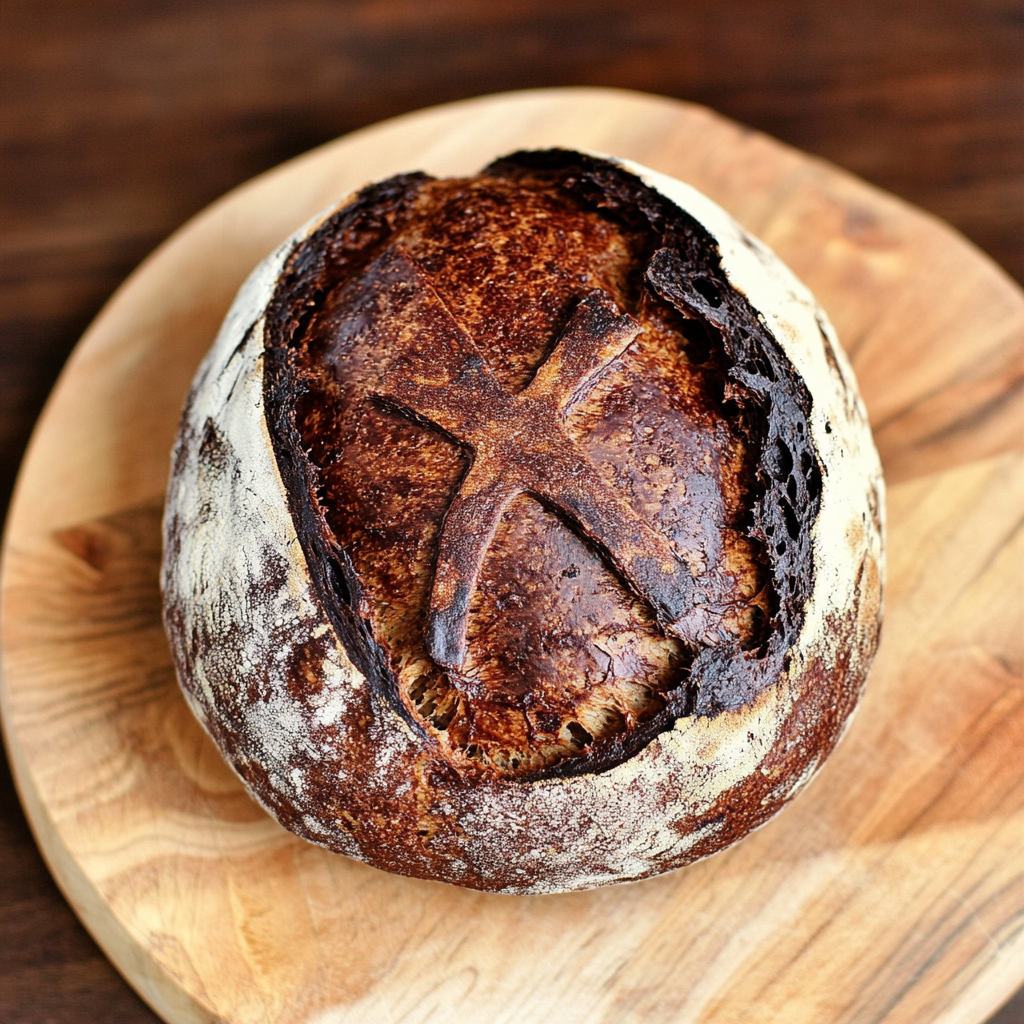
The Science of Sourdough: Fermentation and Flavor
Delving into the world of chocolate sourdough bread, we uncover a fascinating blend of science and culinary art. At its core, the magic of sourdough fermentation transforms simple ingredients into a flavorful, aromatic delight. This process is not just about letting the dough rise; it’s a complex interplay of yeast and bacteria, working together to create the unique taste and texture of chocolate sourdough bread.
Unraveling Fermentation’s Mystique
Fermentation, the heart of sourdough baking, relies on wild yeast and lactobacilli present in the environment and the flour itself. These microorganisms consume sugars, producing carbon dioxide and alcohol as byproducts. The carbon dioxide gets trapped in the dough, causing it to rise and develop its characteristic airy structure. Simultaneously, lactic acid bacteria impart a tangy flavor, which perfectly balances the rich sweetness of chocolate in chocolate sourdough bread.
Flavor Synergy: Chocolate Meets Sourdough
Integrating chocolate into sourdough bread isn’t just about adding sweetness. The cocoa’s bitterness and the sourdough’s tangy notes harmonize, creating a complex flavor profile. The type of chocolate used can dramatically influence the final product. Dark chocolate, with its robust flavor, can enhance the sourdough’s inherent tanginess, while milk chocolate adds a creamier, milder sweetness.
The Role of Time and Temperature
The fermentation duration and the dough’s temperature are critical. A slow, cool fermentation allows flavors to develop more fully, giving chocolate sourdough bread its distinctive depth. This slow process also breaks down gluten, making the bread more digestible and its nutrients more accessible.
In summary, the creation of chocolate sourdough bread is a testament to the beauty of fermentation. It’s a perfect example of how time-honored techniques can merge with modern flavors, resulting in a bread that’s not just nourishing but also a treat for the senses.
Choosing Ingredients for Chocolate Sourdough Bread
Crafting the perfect Chocolate Sourdough Bread starts with picking the finest ingredients. The selection of flour and chocolate is crucial, as they form the heart and soul of your loaf.
Flour – The Backbone of Your Bread: For an ideal Chocolate Sourdough Bread, a mix of bread flour and whole wheat flour works wonders. Bread flour, rich in protein, ensures your dough has enough strength and elasticity. Whole wheat flour, on the other hand, contributes to a deeper flavor and a more complex texture. This combination guarantees a loaf that’s both robust and flavorful, a perfect canvas for the chocolate.
Chocolate – The Star Ingredient: When it comes to chocolate, quality and type matter immensely. Dark chocolate, with its profound and less sweet profile, complements the tangy sourdough beautifully. Chunks or chips? Chunks of high-quality dark chocolate create delightful pockets of gooeyness, while chips offer a more even distribution of chocolatey goodness throughout the bread.
Water – Hydration is Key: The right amount of water is crucial. It affects the dough’s texture and, subsequently, the bread’s crumb and crust. Aim for a hydration level that makes the dough manageable yet sufficiently moist to bring out the best in your sourdough.
Salt – For Flavor and Structure: Don’t forget a pinch of salt! It enhances the flavors, especially the subtle notes of the chocolate, and adds to the overall structure of the bread.
In sum, the right blend of high-quality flour, exquisite chocolate, balanced water content, and a hint of salt sets the stage for a memorable Chocolate Sourdough Bread experience. Every ingredient plays its part in creating a loaf that’s not just a treat for the taste buds but also a feast for the eyes.
The Perfect Starter: Creating and Maintaining
Crafting the perfect chocolate sourdough bread begins with a robust starter. This foundation determines the bread’s flavor and texture. Here’s a guide to create and maintain your starter, ensuring your chocolate sourdough bread always turns out delectable.
Creating Your Sourdough Starter
- Mix Equal Parts Flour and Water: Start by mixing equal parts of whole wheat flour and water. The natural yeast in the flour begins the fermentation process.
- Consistent Feeding: Feed your starter daily with equal parts of flour and water. Regular feeding encourages active yeast growth, crucial for a lively starter.
- Warm, Draft-Free Environment: Keep your starter in a warm, draft-free spot. Temperature influences the fermentation rate, so find a cozy corner in your kitchen.
- Patience is Key: It takes about 5-7 days for your starter to show consistent bubbling and growth. Be patient and observe the changes.
Maintaining Your Sourdough Starter
- Regular Feeding: Even if not baking daily, feed your starter at least once a week. This keeps it alive and ready for your next batch of chocolate sourdough bread.
- Adjust Consistency: Depending on your preference, adjust the consistency by altering the flour-to-water ratio. A thicker starter yields a tangier bread.
- Refrigeration for Breaks: If you’re not baking for a while, store your starter in the refrigerator. This slows down the fermentation, requiring less frequent feeding.
- Reviving the Starter: Before baking, revive your refrigerated starter with a few days of regular feeding at room temperature.
Remember, a well-maintained starter is the secret to exceptional chocolate sourdough bread. It’s not just an ingredient; it’s a living culture that adds character and complexity to your baking
10 Quick Sourdough Discard Recipes: Tasty Ways to Avoid Waste
Mixing Your Dough: Techniques and Tips
When it comes to making Chocolate Sourdough Bread, the mixing stage is crucial. This process not only combines your ingredients but also begins the development of gluten, which is key for the bread’s texture. Here’s how you can master this step:
1. Choose Your Mixing Method: You have two primary options – hand mixing or using a stand mixer. Hand mixing, while more labor-intensive, allows you to feel the dough’s consistency, making adjustments as necessary. If you prefer convenience, a stand mixer with a dough hook can save time and effort.
2. Incorporate Ingredients Gradually: Start by mixing your sourdough starter, water, and flours until they just come together. Let this mixture sit for about 20 minutes – a process known as autolyse. This step hydrates the flour and aids gluten development.
3. Add Salt and Chocolate: After the autolyse period, sprinkle in the salt. For the chocolate in your Chocolate Sourdough Bread, you can either use chocolate chips or chunks. If you opt for chocolate chips, ensure they’re evenly distributed to get that rich chocolate flavor in every bite.
4. Develop the Gluten: Now, it’s time to build up gluten strength. If you’re hand mixing, use a technique called stretch and fold. Gently stretch one side of the dough and fold it over to the opposite side. Rotate the bowl and repeat this process several times. In a mixer, run it on a medium-low setting for about 5 to 7 minutes.
5. Know When to Stop: Whether you’re mixing by hand or machine, look for the dough to become slightly tacky but not overly sticky. It should be smooth and hold its shape. This indicates that the gluten has developed enough, and your Chocolate Sourdough Bread is well on its way to becoming a delicious treat
Shaping Your Chocolate Sourdough Loaf
Shaping your chocolate sourdough bread is a crucial step that determines the final appearance and texture of your loaf. A well-shaped loaf not only looks appealing but also ensures even baking and optimal crumb structure. Here’s how to shape your chocolate sourdough bread for the best results.
Preparing the Dough
After the dough’s first rise, transfer it to a lightly floured surface. Gently deflate it to release any large gas bubbles. This step is vital for achieving a uniform texture in your chocolate sourdough bread.
Round or Oblong – Your Choice
Decide on the shape of your loaf – round (boule) or oblong (batard). For a boule, fold the dough from all sides towards the center and then flip it over. Cup your hands around the dough and rotate it gently to form a tight ball. For a batard, stretch the dough into a rectangle, fold the sides towards the center, and then roll it gently to form an elongated shape.
Final Touches
Place the shaped dough seam-side up in a well-floured proofing basket. This position helps the loaf maintain its shape and rise upwards, not outwards. The basket also imprints a beautiful pattern on the top of your chocolate sourdough bread.
Importance of Rest
Allow the shaped dough to rest for its second rise. This step is crucial as it lets the dough develop its final size and contributes to the open, airy crumb of your chocolate sourdough bread.
By following these steps, you ensure your chocolate sourdough bread not only tastes delightful but also boasts a professional, artisanal look. Happy baking!
Second Rise: Ensuring the Perfect Loaf of Chocolate Sourdough Bread
After shaping your chocolate sourdough bread, it enters a critical phase: the second rise. This stage, known as proofing, is crucial for developing the loaf’s final structure and flavor.
Timing is Key
The second rise usually takes less time than the first, often ranging from 30 minutes to 2 hours. However, don’t watch the clock; watch the dough. It should almost double in size and feel slightly puffy. If it rises too much, the gluten structure can weaken, leading to a dense loaf.
Ideal Conditions
Temperature plays a vital role during this stage. A warm environment, around 75°F to 80°F (24°C to 27°C), is ideal. If your kitchen is cooler, consider using a slightly warmed oven (turned off) or a proofing box to create a consistent, warm environment.
Testing for Readiness
Perform the “poke test” to check if your chocolate sourdough bread is ready to bake. Gently press a finger about half an inch into the dough. If the indentation slowly springs back but still leaves a noticeable impression, your bread is ready.
If it springs back quickly, give it more time.
If the dough collapses, it’s over-proofed.
The Final Stretch
As you near the end of the second rise, preheat your oven. This ensures a hot, steady temperature, crucial for the bread’s final expansion and crust formation.
Remember, chocolate sourdough bread requires patience and attention during the second rise. By controlling time, temperature, and using the poke test, you can ensure your chocolate sourdough bread develops the perfect texture and flavor, ready for the oven’s transformative heat.
Scoring and Baking: The Final Steps
Embarking on the final journey of creating Chocolate Sourdough Bread, we focus on two crucial steps: scoring and baking. These steps not only influence the bread’s appearance but also its texture and taste.
Scoring: The Art of Precision
Scoring, the act of making shallow cuts on the bread’s surface, is not just for aesthetics. It controls how the Chocolate Sourdough Bread expands during baking. A lame or a sharp knife works best for this task. Aim for shallow, angled cuts to create a pattern that allows even expansion and reveals the bread’s inner softness contrasted with its crispy crust.
Baking: Perfecting the Crust and Crumb
Now, we turn to baking, the transformative stage for your Chocolate Sourdough Bread. Preheat your oven to a high temperature, typically around 450°F (232°C), to create an initial burst of heat that gives rise to a beautiful crust. Placing a tray of water in the oven generates steam, contributing to a glossy, crackly crust.
As the bread bakes, its rich chocolate aroma fills the air, promising a delightful taste experience. Baking time varies, but generally, 35-40 minutes should suffice for a loaf to develop a deep brown crust and a fully cooked interior. A digital thermometer can confirm this; aim for an internal temperature of around 200°F (93°C).
Once baked, let your Chocolate Sourdough Bread cool on a wire rack. This patience rewards you with the perfect texture, as slicing into hot bread can lead to a gummy crumb. The wait is worth it, yielding a loaf with a harmonious blend of sourdough tang and indulgent chocolate, encased in a satisfyingly crisp crust.
Cooling and Storing Your Chocolate Sourdough Bread
After you’ve baked your chocolate sourdough bread to perfection, it’s crucial to cool and store it correctly to maintain its delightful taste and texture. Proper cooling and storage not only preserve the quality of your bread but also enhance its flavors, making each slice as enjoyable as the first.
Letting It Cool: The First Step to Perfection
As soon as your chocolate sourdough bread comes out of the oven, resist the temptation to cut into it immediately. The bread needs to cool down to allow the crumb structure to set properly. Place it on a wire rack for optimal air circulation, ensuring an even cooling process. This step usually takes about an hour. Cutting into the bread too soon can result in a gummy texture, so patience is key here.
Storing for Freshness
Once cooled, how you store your chocolate sourdough bread will determine its shelf life. For short-term storage, wrap the bread in a clean, dry cloth or place it in a bread box. This method keeps the crust crispy while maintaining the softness of the interior for up to two days.
For longer storage, slice the bread and freeze it in an airtight container or a sealable plastic bag. This way, you can enjoy your chocolate sourdough bread for weeks. Whenever you crave a slice, simply thaw it at room temperature or toast it directly from the freezer for a quick, delicious treat.
By following these simple yet effective cooling and storing techniques, your chocolate sourdough bread will remain a delightful culinary experience, ready to be savored at any moment.
Pairing Chocolate Sourdough Bread: Sweet and Savory Combinations
Indulging in chocolate sourdough bread, you embark on a culinary journey that tantalizes both sweet and savory taste buds. This unique bread pairs remarkably well with a variety of foods, creating mouthwatering combinations for any occasion.
Sweet Pairings: Enhancing the Chocolate Notes
For a sweet twist, pair your chocolate sourdough bread with fruit spreads like raspberry or apricot jam. These fruity flavors complement the deep, rich tones of the chocolate, offering a delightful contrast. Drizzle honey or sprinkle powdered sugar for a simple yet elegant touch, enhancing the inherent sweetness of the bread.
Savory Combinations: A Bold Contrast
To explore savory options, consider cheeses like brie or camembert. Their creamy texture and subtle flavors create an exquisite balance with the bread’s chocolatey notes. For those who enjoy a sharper taste, blue cheese offers a robust complement to the rich chocolate.
The Ultimate Cheeseboard
Create an impressive cheeseboard by including slices of chocolate sourdough bread alongside a selection of cheeses, cured meats, and nuts. This combination not only pleases the palate but also adds an aesthetic appeal to your spread.
Wine Pairings: Elevating the Experience
Enhance your chocolate sourdough bread experience with wine pairings. A glass of bold red wine, such as Merlot or Cabernet Sauvignon, brings out the chocolate’s richness. For a lighter touch, a Riesling or Chardonnay pairs beautifully, offering a refreshing counterpoint to the bread’s depth.
Incorporating chocolate sourdough bread into your culinary repertoire opens up a world of delicious possibilities. Whether you lean towards sweet or savory, this versatile bread ensures a delightful and satisfying experience with every bite.
Health Benefits of Chocolate Sourdough Bread
Chocolate sourdough bread offers a delicious and nutritious twist to your diet. This unique bread combines the health advantages of traditional sourdough with the added indulgence of chocolate. When you choose chocolate sourdough bread, you’re not just satisfying your sweet tooth; you’re also nourishing your body with beneficial nutrients.
Firstly, the fermentation process in sourdough bread improves digestibility. It breaks down gluten, making it easier on your digestive system compared to regular bread. This process also enhances the bioavailability of minerals like iron and zinc, aiding in better absorption by your body.
The addition of dark chocolate, rich in antioxidants, elevates the health benefits. These antioxidants combat free radicals, reducing oxidative stress and inflammation in your body. Dark chocolate also contains flavonoids, known for their heart-healthy properties. They help in improving blood flow and lowering blood pressure, contributing to overall cardiovascular health.
Moreover, chocolate sourdough bread offers a good balance of complex carbohydrates and dietary fiber. This combination ensures a slower release of energy, helping to maintain steady blood sugar levels. It’s a great option for a satisfying snack that keeps you full longer, aiding in weight management.
Lastly, sourdough fermentation produces natural acids that contribute to a lower glycemic index. This means chocolate sourdough bread has a more favorable impact on blood sugar levels compared to conventional bread.
In summary, chocolate sourdough bread is not just a treat for your taste buds but a beneficial choice for your health. It combines the goodness of fermented dough with the richness of chocolate, offering a nutritious addition to your diet. So, next time you indulge in this delicious bread, remember you’re also doing something good for your body!
Troubleshooting Common Issues in Chocolate Sourdough Bread Making
Baking chocolate sourdough bread can be a rewarding yet challenging experience. Here are some solutions to common problems you might encounter in your baking journey.
Dense Crumb
If your chocolate sourdough bread turns out denser than expected, consider the following adjustments:
- Proofing Time: Allow more time for the dough to rise. Inadequate proofing often results in a dense texture.
- Hydration: Increase the water content slightly. A well-hydrated dough promotes better oven spring and crumb structure.
- Kneading: Ensure adequate kneading to develop gluten properly, essential for a good rise.
Crust and Texture Issues
A less-than-ideal crust or texture in your chocolate sourdough bread might need these fixes:
- Oven Temperature: Bake at a higher temperature initially to achieve a better crust. Consider using a baking stone or steaming method for a crispier exterior.
- Incorporating Chocolate: Add chocolate at the right stage. Mixing it in too early can affect gluten development, altering the bread’s texture.
- Measuring Ingredients: Be precise with measurements. Inaccurate ratios of flour, water, starter, and chocolate can significantly impact the bread’s texture and crust.
Flavor Balance
For the perfect flavor balance in your chocolate sourdough bread:
- Quality of Ingredients: Use high-quality chocolate and sourdough starter. The flavors of these key ingredients greatly influence the final taste of your bread.
- Fermentation: Monitor fermentation closely. Over or under-fermentation can significantly affect the flavor profile, masking or overpowering the subtle notes of chocolate.
Remember, making chocolate sourdough bread is as much an art as it is a science. Each batch teaches you something new, so embrace the process and enjoy the delicious results of your efforts!
Advanced Techniques for Chocolate Sourdough Bread
Mastering chocolate sourdough bread involves more than just following a recipe. It’s an art that requires both skill and creativity. Here, we delve into advanced techniques that elevate your chocolate sourdough bread, transforming it from good to exceptional.
Experimenting with Chocolate Varieties
Don’t limit yourself to just one type of chocolate. Experiment with a range of chocolates – from dark to milk, or even infused varieties like orange or chili chocolate. Each type brings its unique flavor profile, altering the final taste of your bread. Consider adding chocolate chunks at different stages of the dough preparation for varied texture and flavor bursts.
Hybrid Fermentation
Combine the traditional sourdough starter with a small amount of commercial yeast. This technique can enhance the bread’s rise and produce a more consistent crumb structure, especially beneficial when dealing with the added weight of chocolate chunks.
Cold Fermentation
Let your chocolate sourdough dough rest in the refrigerator for an extended period, anywhere from 12 to 48 hours. This slow fermentation process allows more complex flavors to develop, giving your bread a deeper, more nuanced taste profile that complements the richness of the chocolate.
Steam Baking
Introduce steam during the initial baking phase. This method helps in achieving a glossy, crackly crust while ensuring the interior remains moist and airy. The contrast between the crunchy crust and the soft, chocolate-laden crumb makes each bite a delightful experience.
Layering Chocolate
Incorporate chocolate into your dough in layers. Roll out your dough and sprinkle chocolate shavings or small chunks, fold, and repeat. This layering technique creates pockets of chocolate throughout the loaf, ensuring every slice is packed with flavor.
By applying these advanced techniques, you can craft a chocolate sourdough bread that’s not only a treat for the taste buds but also a testament to your baking prowess.
Baking Chocolate Sourdough Bread with Kids
Baking chocolate sourdough bread with kids can be a delightful and educational experience. It’s not just about creating a delicious treat; it’s also about sharing valuable skills and enjoying quality time together. Here’s a simple guide to make this baking session fun and successful.
Firstly, involve the kids in choosing the ingredients. Let them feel and smell the flour and chocolate, explaining why these components are essential for our chocolate sourdough bread. Use this opportunity to teach them about measurements and the importance of accuracy in baking.
As you mix the dough, encourage the children to get their hands dirty. Kneading is not only fun but also a great way for them to develop motor skills. Explain the science behind yeast and fermentation in simple terms, linking it to the dough rising process. Watching the dough puff up can be magical for young minds.
When it’s time to add chocolate, let them sprinkle in the chunks or chips. This step is where they can get creative, deciding how chocolatey their bread should be.
As the bread bakes, fill their waiting time with stories about the origin of sourdough or how different cultures enjoy their bread. Finally, when your chocolate sourdough bread is ready and cooling, discuss the importance of patience and the rewards it brings.
Not only do these activities make for a fun day, but they also instill a sense of accomplishment in the kids. They learn valuable baking skills, the science behind food, and most importantly, they understand the joy of creating something from scratch. So, gather your ingredients, round up the little ones, and embark on the delightful journey of baking chocolate sourdough bread together!
FAQs About Chocolate Sourdough Bread
1. What sets Chocolate Sourdough Bread apart from regular bread? Chocolate Sourdough Bread uniquely combines the tangy, deep flavors of traditional sourdough with the rich, comforting taste of chocolate. This blend offers a delightful taste experience that differs significantly from regular bread.
2. Is Chocolate Sourdough Bread difficult to bake for beginners? While it presents a few more challenges than basic bread recipes, beginners can successfully bake Chocolate Sourdough Bread with patience and careful attention to the sourdough starter and fermentation process.
3. Can I use any type of chocolate in this recipe? Yes, but the choice of chocolate can alter the flavor of your bread. Dark chocolate yields a rich, intense flavor, while milk chocolate offers a sweeter, milder taste. Choose based on your preference.
4. How long does Chocolate Sourdough Bread stay fresh? Properly stored in a cool, dry place, it can stay fresh for up to 4-5 days. You can also slice and freeze it for longer shelf life.
5. Can I make Chocolate Sourdough Bread gluten-free? Yes, but it requires specific gluten-free flours and adjustments to the sourdough starter. Keep in mind, the texture and flavor might differ from traditional sourdough bread.
6. What are some serving suggestions for Chocolate Sourdough Bread? It pairs wonderfully with various spreads like cream cheese, nut butters, or simply butter. It also makes an excellent base for desserts or eaten as a sweet treat on its own.
7. Is Chocolate Sourdough Bread healthy? Chocolate Sourdough Bread contains the health benefits of sourdough, like easier digestibility and nutrients, combined with the antioxidants found in chocolate. However, moderation is key due to its sugar and calorie content.
Conclusion: The Endless Charm of Chocolate Sourdough Bread
In the world of artisanal baking, Chocolate Sourdough Bread stands out as a remarkable fusion of tradition and innovation. This delightful bread not only satisfies the taste buds with its unique blend of tangy sourdough and rich chocolate but also represents the creativity and passion inherent in the art of baking. Whether you’re a seasoned baker or a curious beginner, diving into the journey of making Chocolate Sourdough Bread is both rewarding and inspiring.
The process of baking this bread, from nurturing the starter to savoring the final product, is a testament to the beauty of slow food and the joys of homemade baking. It encourages bakers to experiment with flavors and techniques, pushing the boundaries of traditional bread-making.
Furthermore, Chocolate Sourdough Bread goes beyond being just a culinary delight. It’s a symbol of sharing and caring, making it an excellent gift that conveys warmth and affection. Its versatility in pairings and occasions only adds to its appeal, making it a favorite for both everyday indulgences and special celebrations.
In conclusion, Chocolate Sourdough Bread is more than just a recipe; it’s an experience, a story of flavors, and a journey worth exploring. Its unique charm lies in its ability to bring people together, create lasting memories, and add a touch of sweetness to the simple moments of life. So, why not embrace this delightful baking adventure and see where it takes you?


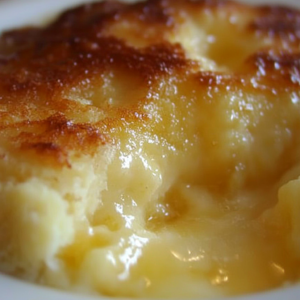
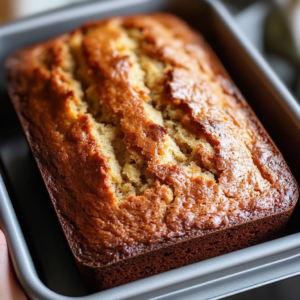
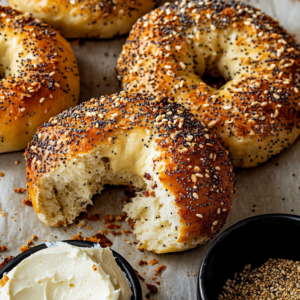
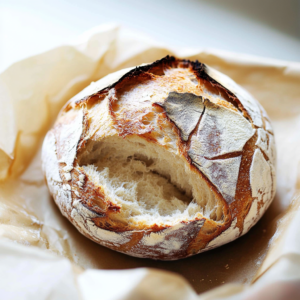
1 thought on “Chocolate Sourdough Bread: Baking Perfection Guide”
Comments are closed.